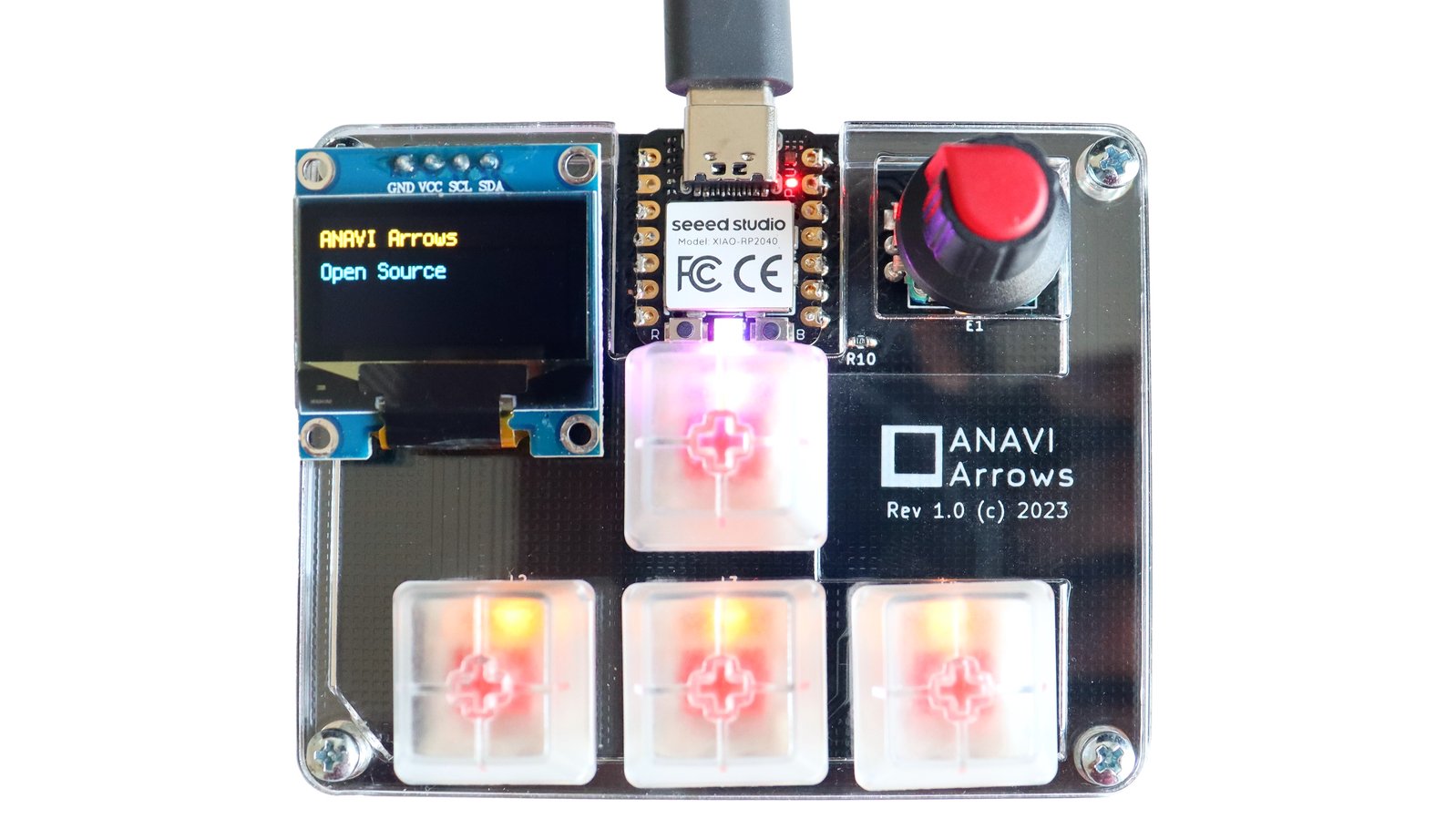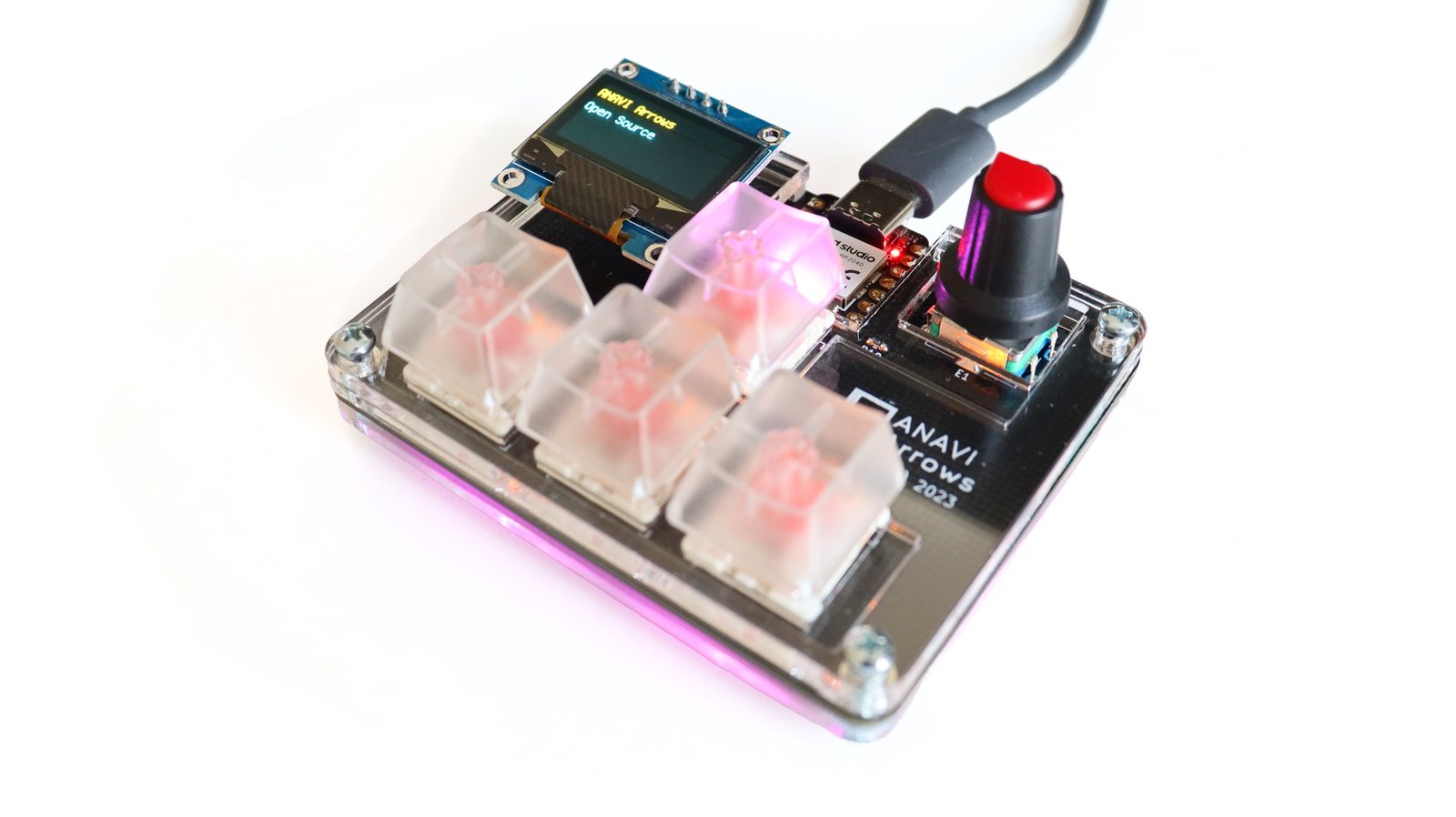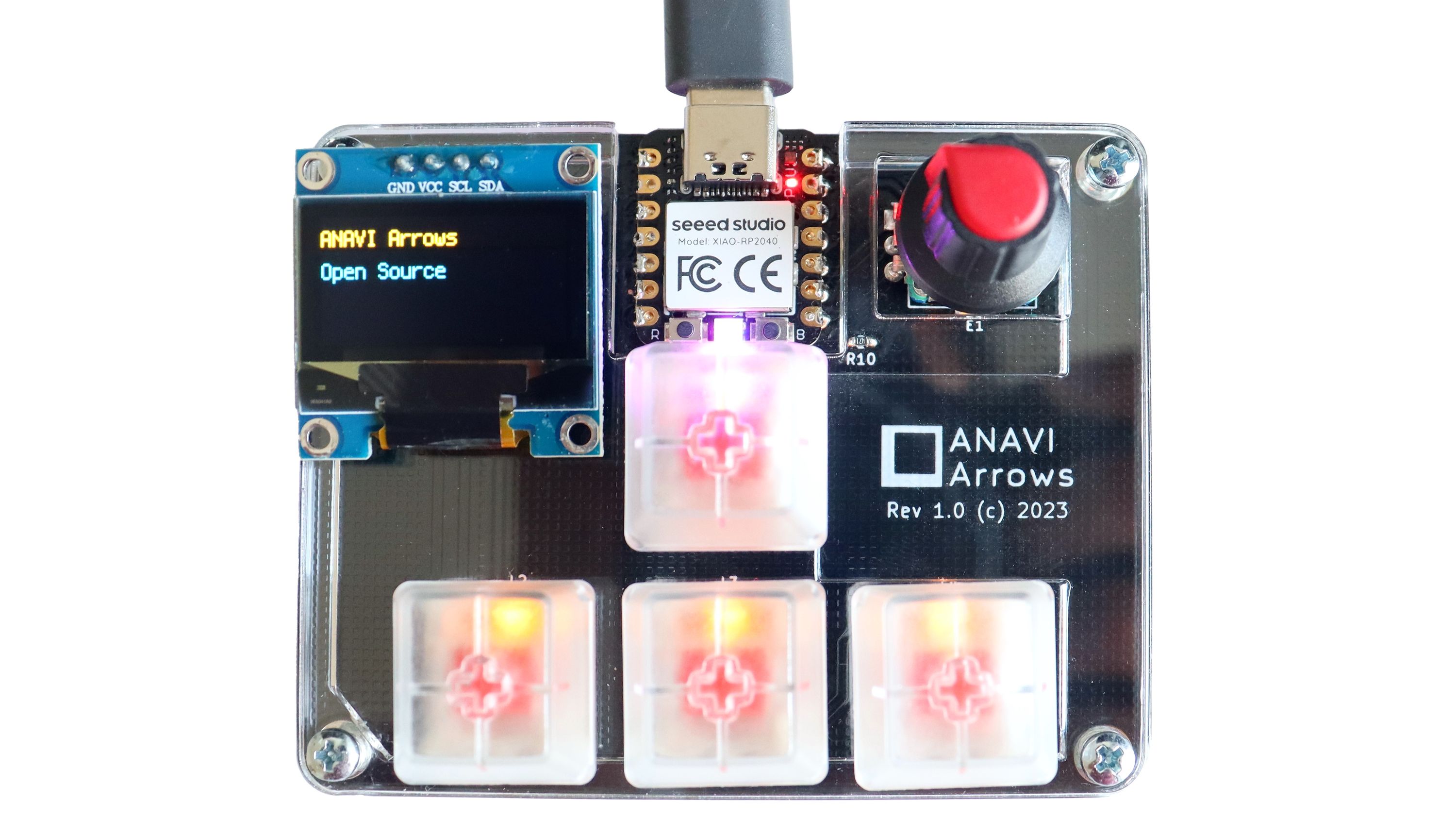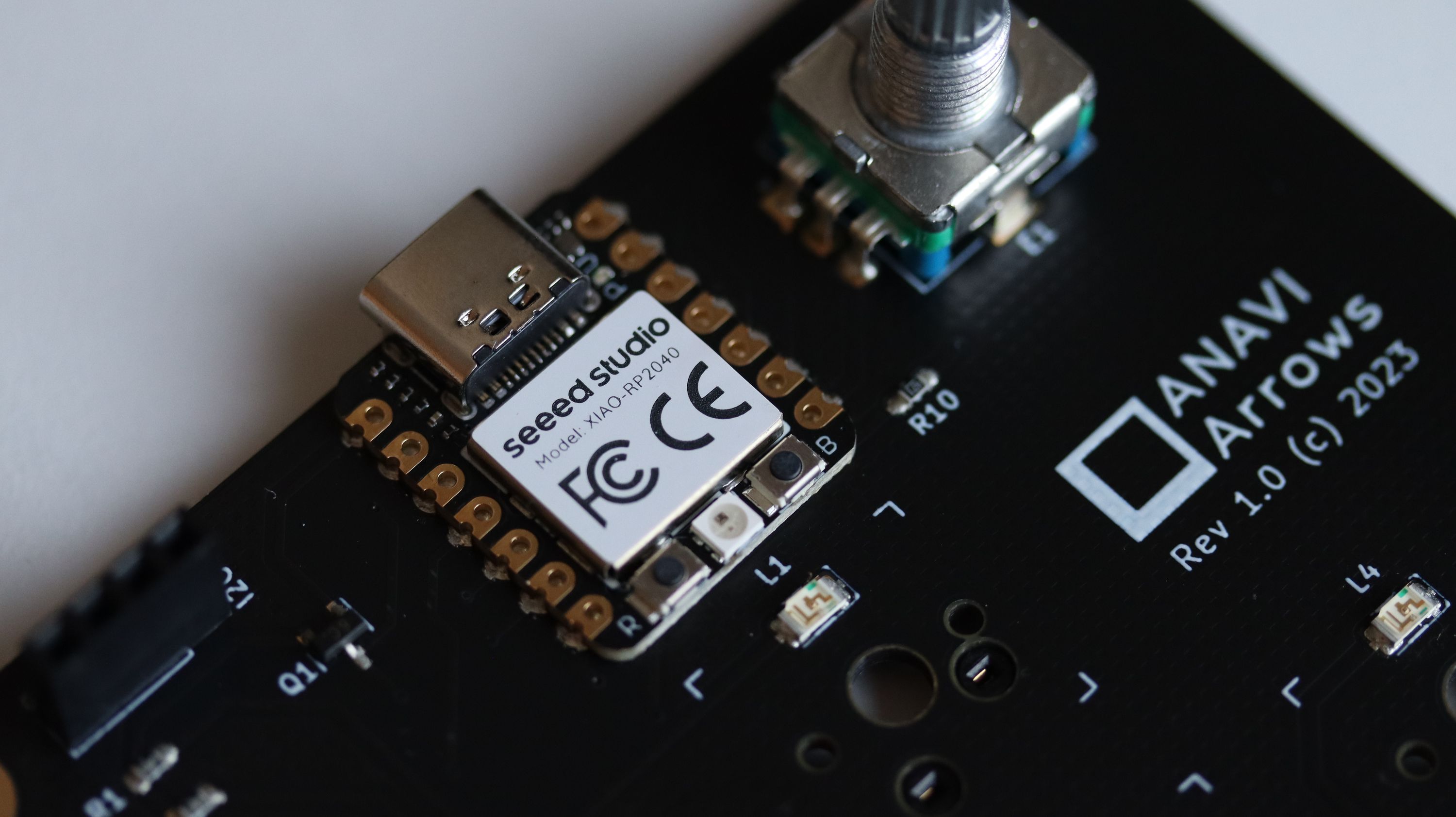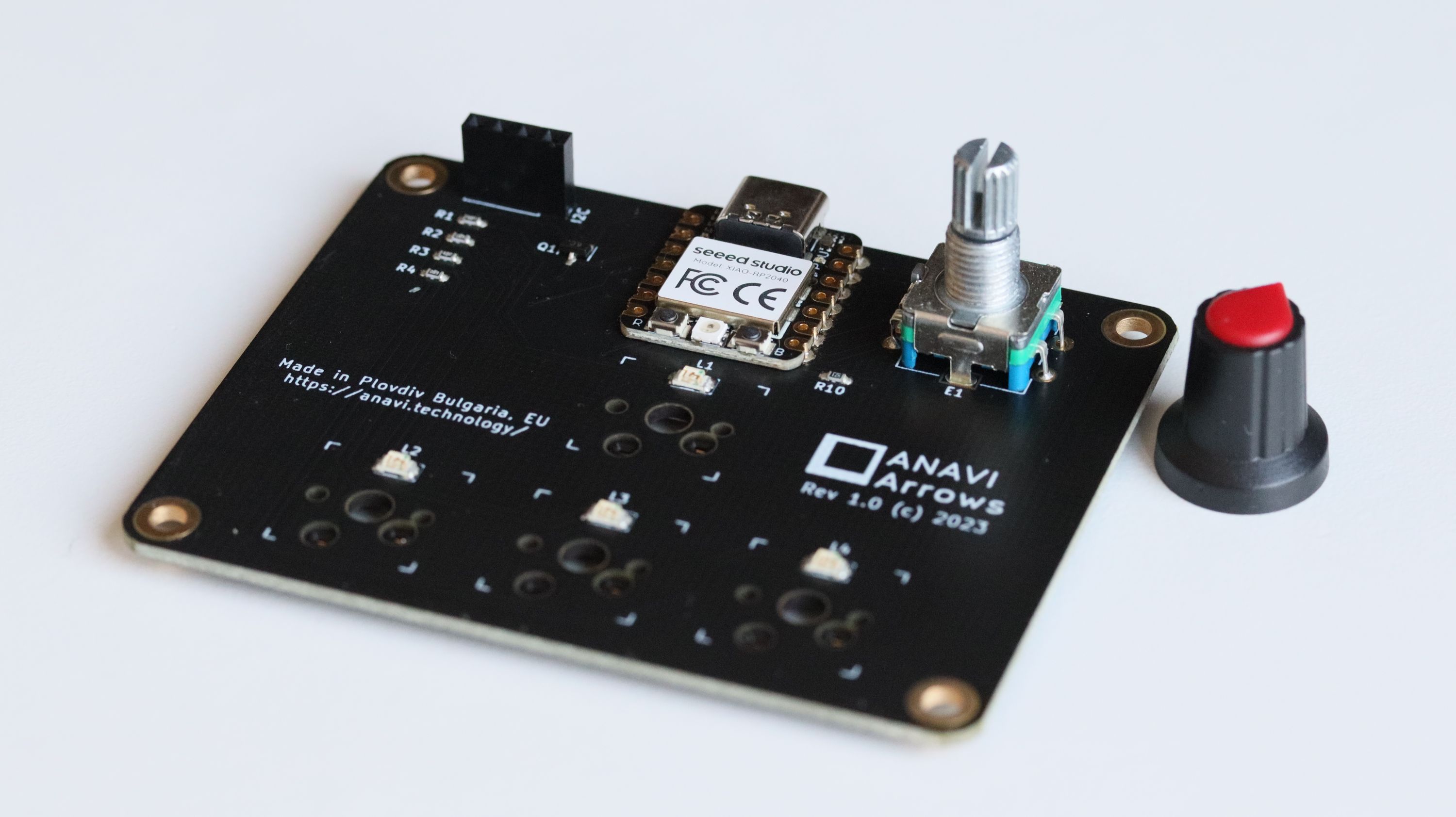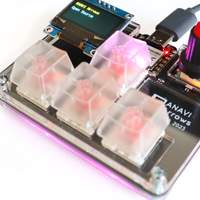Project update 7 of 10
ANAVI Arrows: A Look at The Inverted-T Keyboard and Rotary Encoder
by ANAVI TechnologyANAVI Macro Pad 12 and ANAVI Arrows are two sleek, open-source keyboards featuring mini OLED displays. ANAVI Arrows boasts two standout features: the famous Inverted-T layout combined with a cutting-edge rotary encoder. ANAVI Arrows has been designed as a companion for side tasks and productivity enhancement. Made to complement users of 60% or 40% keyboards, ANAVI Arrows delivers efficiency and convenience, making it a must-have addition to any setup.
The Inverted-T Keyboard Layout
Before the Inverted-T layout, keyboards used a different arrangement for arrow keys. The arrow keys were often laid out in a "+" shape, with the up and down arrows placed above the left and right arrows. This layout made it somewhat cumbersome to use the arrow keys efficiently. Other personal computers, like the original Apple Macintosh, had no arrow keys at all.
In the 1980s, the Inverted-T layout was introduced as a solution for better usability and increase productivity. It quickly gained popularity and became a standard design for the arrow keys on computer keyboards. This layout placed the up and down arrow keys in a vertical line, and the left and right arrow keys in a horizontal line, forming the shape of an inverted "T".
Historically, the inverted-T layout was popularized by the Digital Equipment Corporation (DEC) LK201 keyboard from 1982. It rose to fame along with the iconic IBM Model M keyboard, which was released in 1985. Recently, Youtuber The 8-Bit Guy published a video about "The History of Cursor Keys" that compares the various layouts on keyboards from the late 70s and 80s:
ANAVI Arrows is a small, fully programmable, mechanical keyboard. It implements the Inverted-T layout with a mini OLED display on the left and a rotary encoder on the right.
Rotary Encoders
A rotary encoder is an electromechanical device that converts rotational movement into digital signals and typically rotates a full 360 degrees. It is designed to measure rotational movement, so its construction allows continuous rotation in either direction without limitations on the number of turns. Rotary encoders are commonly used in industrial automation, robotics, and consumer electronics for accurate feedback and control.
Both of our hot-swappable mechanical keyboards, ANAVI Macro Pad 12 and ANAVI Arrows, rely on the Seeed Studio XIAO module with a Raspberry Pi RP2040 microcontroller. The rotary encoder EC11 on ANAVI Arrows is connected to pins D7, D8 and D9 of the XIAO RP2040. The open source KMK firmware for ANAVI Arrows uses the Encoder module for programming and control.
You can easily turn the rotary encoder left or right, and you can also click it, all of which is fully programmable! ANAVI Arrows comes in a kit with a plastic knob for the rotary encoder, enabling users to interact and perform tasks. We selected a knob with two colors: red to match the Gateron red mechanical switches and black to match the color of the printed circuit board of ANAVI Arrows.
Please note that although rotary encoders look similar to potentiometers, there is a significant technical difference. Rotary encoders generate digital signals, offering incremental or absolute position information, and can rotate continuously without stops. Potentiometers, on the other hand, provide analog output and have limited rotational range. They are commonly used for control and adjustment purposes, such as a volume control in audio equipment.
Level up your typing with a compact, open-source keyboard featuring an inverted-T layout, mini OLED display and a rotary encoder. Get ANAVI Arrows or ANAVI Macro Pad 12 from our crowdfunding campaign for the ultimate typing experience and control. Don’t miss out!
